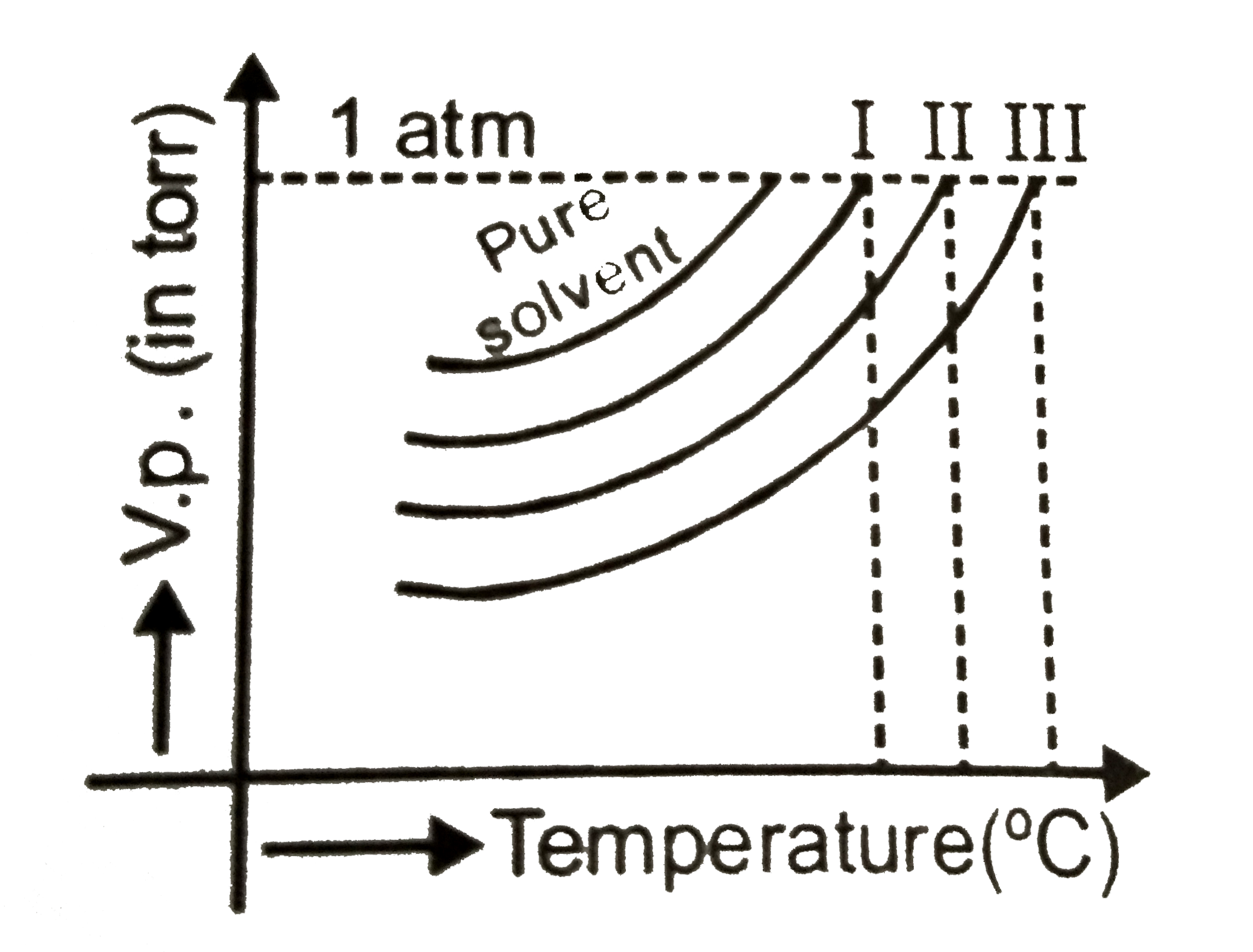Equimolal solutions in the same solvent have
Same freezing point but different boiling point
Same boiling point but different freezing point
Different boiling and different freezing point
Same boiling and same freezing points
The correct Answer is:D
Colligative Prop ∝ No.of moles of solute
Topper's Solved these Questions
- SOLUTIONSBOOK - ALLENCHAPTER - SOLUTIONSEXERCISE - EXERCISE -05 [B]
22 Videos
- SOLUTIONSBOOK - ALLENCHAPTER - SOLUTIONSEXERCISE - EXERCISE-04 [B]
20 Videos
- S-BLOCK ELEMENTS BOOK - ALLENCHAPTER - S-BLOCK ELEMENTS EXERCISE - EXERCISE -3
1 Videos
- Some Basic Concepts of Chemistry (Mole concept)BOOK - ALLENCHAPTER - Some Basic Concepts of Chemistry (Mole concept)EXERCISE - All Questions
39 Videos
Similar Questions
The plot given below shows P – T curves (where P is the pressure and T is the temperature) for two solvents X and Y and isomolal solutions of NaCl in these solvents. NaCl completely dissociates in both the solvents.

On addition of equal number of moles of a non-volatile solute S in equal amount (in kg) of these solvents, the elevation of boiling point of solvent X is three times that of solvent Y. Solute S is known to undergo dimerization in these solvents. If the degree of dimerization is 0.7 in solvent Y, the degree of dimerization in solvent X is ______________.
View SolutionEquimolar solutions of two non-electroytes in the same solvent have:
View Solution
Knowledge Check
Equimolar solutions in the same solvent have-
Asame elevation in boiling point and same depression in freezing pointBdifferent elevation in boiling point and different depression in freezing pointCsame elevation in boiling point but different depression in freezing pointDsame depression in freezing point but different elevation in boiling pointद्रव विलयन में कौन सा जिसमें विलेय गैस का कार्य करता है?
AठोसBगैसCतरलDऊपर के सभी
The vapour pressure curves of the same solute in the same solvent are shown below. The curves are parallel to each other andnot intersectt. The concentrations of solutions are in order of :

View SolutionThe elevation of boiling point produced by dilute equimolal solutions of three substances are in the order A>glucose>B Suggest a reason for this observation.
View SolutionElevation in the boiling point for 1 molal solution of glucose is 2K. The depression in the freezing point for 2 molal solution of glucose in the same solvent is 2K. The relation between KbandKf is
View SolutionIsotonic solutions have same
View SolutionIf two solutions have the same osmolarity, they are said to be
View SolutionCopper sulphate dissolves in water to give copper sulphate solution. Name the solute, solvent and solution in the above statement.
View Solution
